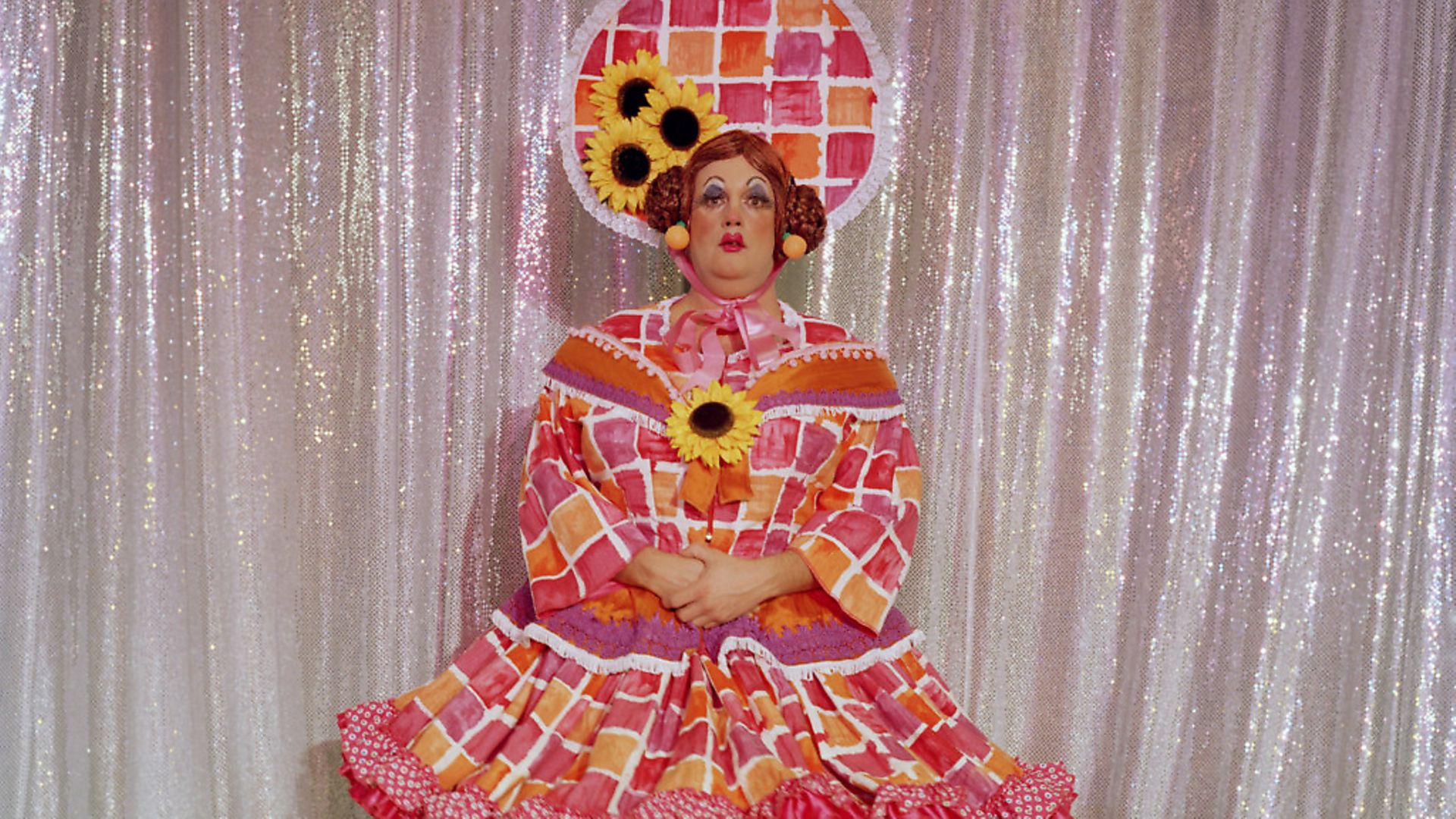
It seems like the quintessential British Christmas tradition, but pantomime’s roots are to be found in Europe. Roger Domeneghetti explains.
As Christmas approaches theatres across Britain will be packed out with families shouting “It’s behind you!” at men dressed as women and women dressed as young men. Pantomime is a staple of the festive season yet, like other traditions which are key elements of the British culture, such as the Christmas tree or even Santa Claus, its origins come from abroad.
Many of the core elements of pantomimes and the stock characters which regularly grace provincial theatres at this time of year come from overseas or were popularised by immigrant actors and theatre impresarios.
In the early stages of its existence pantomime was even seen as foreign tradition despised by some and disparagingly contrasted with the plays of an emerging British icon, William Shakespeare.
We have the ancient Greeks to thank for the word pantomime itself. One of the most popular theatre styles of the ancient world was pantomimos meaning ‘imitator of all’.
It consisted of a highly skilled routine performed by dancer wearing a flowing robe and a mask. The dancer would perform alone and not speak, with the focus being on their exaggerated bodily movements. Despite the similarity of the name, pantomimos had little in common with its modern-day equivalent.
The roots of what we know as pantomime can be found in commedia dell’arte, a popular form of theatre which developed in northern Italy in the 15th century. Meaning ‘comedy of the artists these performances took place in streets and market places. Although improvised, they adhered to a framework of basic plots and used stock characters. The actors wore masks, so the audience could immediately recognise which character they were playing. They also tended to specialise in one role, the best gaining considerable fame for doing so.
The masks, which obviously hid the actors’ facial expressions, ensured the performers had to place an emphasis on wordplay and exaggerated gestures. The improvised nature allowed the actors to tailor the performances for each audience and include subtle political commentary and bawdy humour that would otherwise be censored.
A typical plot focused on the travails of a pair of innamorati, or young lovers, who are being kept apart by several vecchi, or old men such as a jealous suitor or well-meaning but strict guardian. The innamorati would be helped in their bid to outwit their elders by zanni, or servant characters, and eventually the performance would reach a happy conclusion.
Over time these characters developed names, such as heroic Harlequin, his true love Columbine, her over-protective father Pantaloon, and his servant Pulcinello. The echos of these roles resonate through modern pantomime with the likes of Cinderella and Prince Charming, who require the help of Buttons and Widow Twanky to find true love in the face of resistance from Baron Hardup and the Ugly Sisters.
Other than the basic plot structure the only core element was the lazzi. These were rehearsed comic routines such as chases or fights most often performed by the zanni which allowed actors to display their physical skills and which, as with the stock characters, are antecedents of the slapstick routines seen in modern pantomime.
The itinerant commedia dell’ arte troupes performed throughout Europe, becoming particularly popular in France.
There the genre became established as Comédie-Italienne in the mid-1600s and had continued success until 1697 when Louis XIV expelled the Italian troupes. By that time they had already reached England. To overcome the language barrier, the spoken elements were removed and there was more emphasis on singing and dancing.
Initially these were short entr’acte entertainments performed during the breaks in opera or other serious performances, to give the audience some comic respite, but by the 1720s they had become shows in their own right.
They were pioneered by John Rich, the actor-manager of the Lincoln’s Inn Fields Theatre and his rival John Weaver at the Drury Lane Theatre. The pair drew inspiration from commedia dell’ arte, combining its characteristics with elements drawn from English opera, English folk stories and more conventional theatrical song and dance.
They presented these comedic performances alongside more serious plays and over several years engaged in something of a pantomime war, Rich ultimately emerging as the victor thanks to his spectacular performances which included live animals, and even flying machines which saw characters descend on magic carpets and flying birds.
This success enabled Rich to open the Theatre Royal in Covent Garden where for a time he employed a young actor called David Garrick.
The son of French immigrants, Garrick did more than most to establish the pantomime as a staple of the British theatre calendar. His grandfather David Garric had fled France when Protestantism was declared illegal in 1685, Anglicising the family name on arrival.
Garrick became a professional actor in 1747 and subsequently bought a share of Drury Lane’s Theatre Royal, managing it for the next 29 years.
He was a devotee of Shakespeare and considered pantomime to be tawdry by comparison. The easiest way for Garrick’s contemporaries to annoy him was to suggest his productions were “pantomimesque”. He wasn’t alone in this contempt for pantomime with the Times correspondent declaring it as “an alarming symptom of a nation’s degeneracy”.
Despite this, Garrick was also a pragmatic businessman. Prior to the 1750 theatre season he lamented the public’s comparative lack of interest in the likes of King Lear and Hamlet while also conceding that he needed to give them Harlequin instead.
However, this distaste for pantomime wasn’t just a professional judgement, it was also born of xenophobia.
In the mid-18th century Shakespeare was not yet seen as the epitome of British culture. Garrick dedicated his career to promoting the Bard as just that and he did so by contrasting Shakespeare’s works with the supposedly inferior output of the country’s main rival, France.
Thus, Garrick considered pantomime, with its continental roots, to be a foreign interloper. He regularly presented Harlequin as the antithesis of Shakespeare, positioning the former as a usurper whose inferiority needed to be exposed before they were repelled.
At the same time this enabled him to present the latter as a beacon of British national identity, which was newly emerging following the Act of Union in 1707.
These duel themes were on display in Garrick’s 1759 pantomime Harlequin’s Invasion: A Christmas Gambol.
Harlequin, the embodiment of the foreign pantomime, is the villain of the piece, replete with a black mask. However he is eventually banished from the stage, to be replaced by a statue of Shakespeare.
Consciously or otherwise, the relevant stage direction: “Shakepeare rises, Harlequin sinks” echoed Garrick’s belief that not only would the Bard’s work triumph but that it was also a higher form of culture than its foreign rival.
Harlequin’s Invasion made its debut on New Year’s Day. By this time Garrick had begun to restrict the times when new pantomimes could be performed to the festive season.
For the impresario this was a further attempt to contrast pantomime with Shakespeare, a timeless man for all seasons whose plays were deemed worthy enough to be performed all year round. However, the legacy of this decision was to create the link between pantomimes with the frivolity and joy of Christmas.
Today the comic focal point of this frivolity is often the pantomime dame, a role which was created in the 1800s by Joseph Grimaldi. He was born in 1778 to an acting family of Italian immigrants and made his stage debut aged just two at Drury Lane where his father Giuseppe was employed by Garrick as maitre de ballet.
Giuseppe trained other dancers and choreographed their comic routines with the London press acknowledging him as a “man of genius”, but his fame would soon be surpassed by Joseph. The younger Grimaldi expanded the role of the clown in pantomime, being the first to paint his face white, use exaggerated make-up and wear a brightly coloured wig, a look which is familiar from circus acts to Batman’s arch rival the Joker.
Eventually Grimaldi complemented this look by performing in drag, pioneering the idea of the pantomime dame. He played roles such as the Baroness in Harlequin and Cinderella and Dame Cecily Suet in Harlequin Whittington. Decades later the Ugly Sisters, a key element of the Cinderella pantomime, were introduced by Rossini in La Cenerentola, his operatic retelling of the story.
By the 19th century the plots of pantomimes were increasingly focused on topical subjects. For example, after the Stockton to Darlington railway opened in 1825 theatregoers were treated to The Birth of the Steam Engine or Harlequin Locomotive and Joe Miller and his Men.
These stories became increasingly bizarre and nonsensical so by the end of the century pantomime writers drew on popular folk tales for inspiration. At the same time the spotlight drifted away from Harlequin and his role was taken by different characters in each story.
This transition was pioneered by Augustus Harris, the French-born manager of the Drury Lane Theatre who produced costly and lavish productions of titles we would recognise today like Aladdin, Cinderella and Babes in the Wood.
He also recruited stars of the music hall, thus starting the trend of combining celebrity with story and spectacle which continues to this day.
Now pantomime is considered a quintessentially British art form, so much so it has little success abroad. Yet its roots abroad and absorption of elements of foreign cultures, coupled with the key roles played in its development by a series of immigrants is, in a way, what makes it British.
The reality is Britain is a nation of immigrants; Romans, Vikings, Celts, Normans, Jews, Indians, and Africans. Pantomime merely reflects that history.









